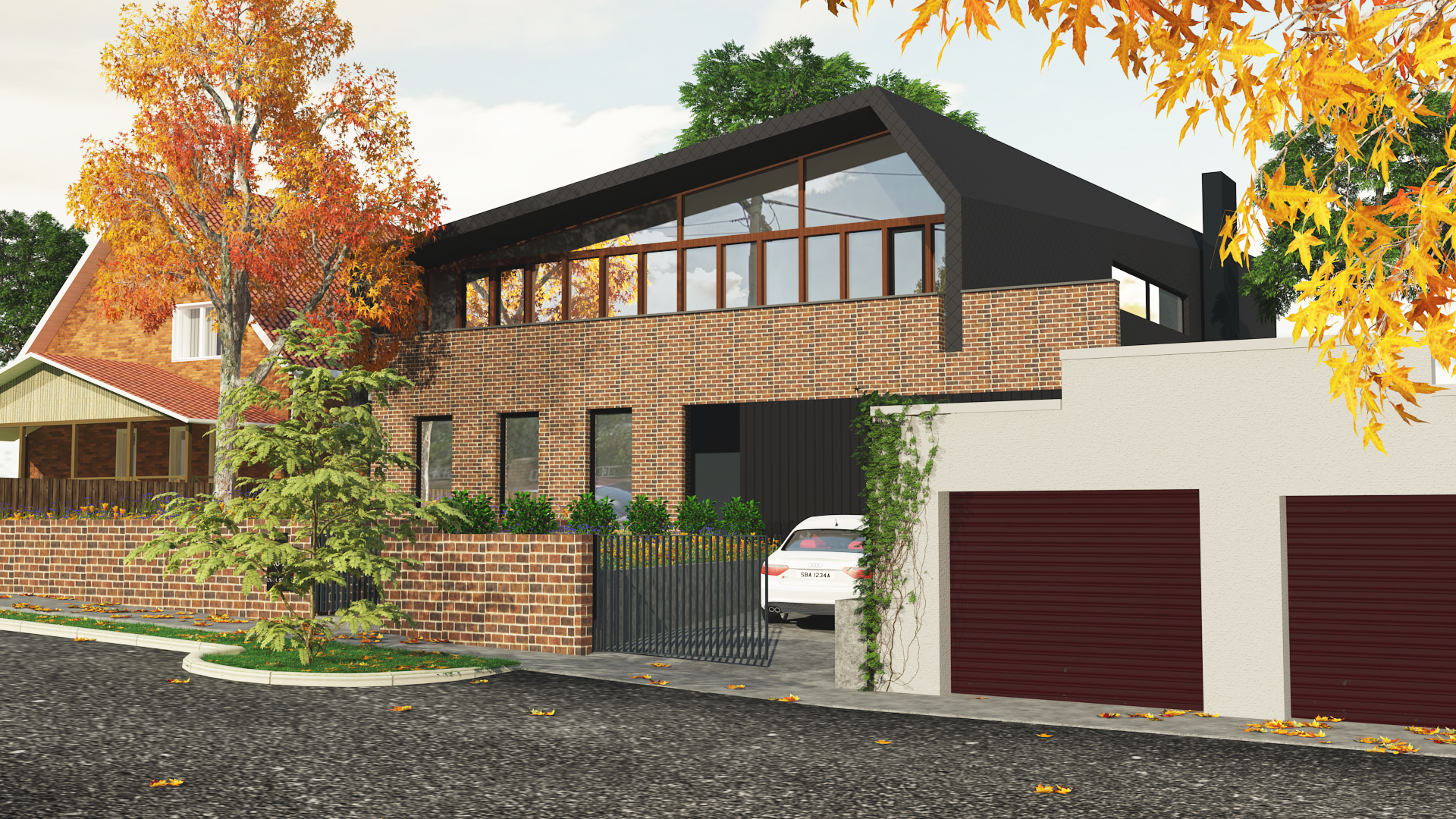How AR and VR Technology Helps in Outsourcing Architectural Services
Posted on : Jul 13, 2023
Unleash the transformative power of architectural innovation with 𝐂-𝐃𝐞𝐬𝐢𝐠𝐧! Step into a world where imagination takes shape and creativity knows no bounds. Welcome to the realm of 𝗘𝗹𝗲𝗴𝗮𝗻𝘁 𝗔𝗿𝗰𝗵𝗶𝘁𝗲𝗰𝘁𝘂𝗿𝗲, where our team of passionate architects and designers is dedicated to turning your dreams into extraordinary realities. With unrivaled expertise and a focus on sustainable design, we bring your visions to life while leaving a positive footprint on the environment. From conceptualization to intricate 3D modeling, our comprehensive range of services caters to residential, commercial, and industrial projects. Experience the harmonious fusion of form and function as we create spaces that inspire and captivate. Embrace the extraordinary and embark on your architectural journey today by visiting www.outsourcingcadworks.com .
Let 𝐂-𝐃𝐞𝐬𝐢𝐠𝐧 be your partner in crafting architectural wonders that leave a lasting impression.
𝐂𝐨𝐧𝐭𝐚𝐜𝐭 𝐮𝐬 : projects@c-design.in
𝗖𝗹𝗶𝗰𝗸 𝗼𝗻 𝗟𝗶𝗻𝗸: https://shorturl.at/auy14
Outsourcing architectural services has become a popular strategy for firms looking to optimize their operations and improve project outcomes. With advancements in technology, particularly in the fields of Augmented Reality (AR) and Virtual Reality (VR), outsourcing architectural services has become even more beneficial. In this article, we will explore how AR and VR technology is transforming the outsourcing landscape in the architectural industry and the advantages it offers to both firms and outsourcing partners.
1. Introduction
Outsourcing architectural services involves delegating certain tasks or phases of a project to external professionals or specialized firms. This approach allows architectural firms to leverage external expertise, enhance efficiency, and reduce costs. With the advent of AR and VR technology, outsourcing architectural services has gained new dimensions, enabling more immersive experiences, efficient collaboration, and enhanced decision-making.
2. Understanding AR and VR Technology
Augmented Reality (AR) and Virtual Reality (VR) are immersive technologies that alter our perception of the real world. AR enhances our environment by overlaying digital information, while VR creates a completely virtual environment. These technologies are revolutionizing the way architectural firms collaborate, visualize designs, and engage with clients and stakeholders.
3. Enhanced Visualization and Design Review
AR and VR technology offer several advantages when it comes to visualization and design review in the context of outsourcing architectural services.
3.1 Immersive Virtual Walkthroughs
With VR technology, architectural firms can create realistic virtual environments that allow stakeholders to experience and navigate through a project before it is built. This immersive virtual walkthrough enables outsourcing partners to visualize the design intent, identify potential issues, and make informed decisions. It enhances communication and ensures that everyone involved has a shared understanding of the project.
3.2 Real-Time Collaboration and Feedback
AR and VR technology enable real-time collaboration and feedback during the design review process. Through virtual meetings and shared virtual spaces, outsourcing partners can come together, explore designs, and provide feedback. This streamlines the review process, minimizes delays, and fosters effective communication between the architectural firm and the outsourcing partner.
3.3 Minimizing Errors and Rework
By using AR and VR technology, architectural firms can identify design flaws, clashes, and inconsistencies early in the project lifecycle. This helps minimize errors and reduces the need for costly rework. Outsourcing partners can spot issues and provide feedback in real-time, leading to faster iterations and improved design accuracy.
4. Remote Client Engagement
AR and VR technology facilitate remote client engagement, which is especially beneficial in outsourcing architectural services where clients may be geographically distant from the firm or the outsourcing partner.
4.1 Virtual Meetings and Presentations
AR and VR enable architectural firms to conduct virtual meetings and presentations with clients. This eliminates the need for extensive travel and allows clients to participate in design discussions regardless of their location. Virtual meetings provide a highly interactive and immersive experience, enabling clients to visualize and understand the project more effectively.
4.2 Interactive Design Reviews
Through AR and VR technology, clients can actively engage in design reviews. They can navigate through virtual models, make suggestions, and provide feedback in real-time. This level of interaction enhances client satisfaction, fosters a sense of involvement, and ensures that the final design meets their expectations.
4.3 Efficient Decision-Making Processes
AR and VR technology facilitate efficient decision-making processes by providing clients with a realistic and immersive understanding of the project. Clients can evaluate different design options, assess material choices, and make informed decisions remotely. This expedites the decision-making process, reduces delays, and keeps the project on track.
5. Cost and Time Savings
Implementing AR and VR technology in outsourcing architectural services can result in significant cost and time savings.
5.1 Reduced Travel Expenses
AR and VR technology eliminate or reduce the need for travel when engaging with outsourcing partners or clients. Instead of physically visiting sites or attending meetings, stakeholders can collaborate virtually from anywhere in the world. This saves travel expenses and allows firms to allocate their resources more efficiently.
5.2 Accelerated Project Timelines
By facilitating real-time collaboration, iterative design reviews, and faster decision-making, AR and VR technology help accelerate project timelines. Architectural firms can obtain timely feedback from outsourcing partners and clients, make necessary adjustments, and proceed with the project without unnecessary delays. This increased efficiency improves overall project delivery and reduces time-to-market.
5.3 Efficient Communication and Documentation
AR and VR technology offer efficient communication channels and documentation processes. Virtual meetings, design reviews, and feedback sessions can be recorded and documented for future reference. This ensures that all communication is captured accurately, minimizing misinterpretation or information loss. Efficient documentation improves project management and provides a comprehensive record of the project’s evolution.
6. Training and Skill Development
AR and VR technology can also contribute to the training and skill development of architectural professionals within the outsourcing context.
6.1 Virtual Training Simulations
AR and VR simulations allow architectural professionals to enhance their skills and knowledge through virtual training programs. Outsourcing partners can provide training modules that simulate real-world scenarios, enabling professionals to practice and refine their skills in a controlled environment. This fosters continuous learning and development.
6.2 Onboarding and Knowledge Transfer
When outsourcing architectural services, effective onboarding and knowledge transfer are essential. AR and VR technology provide immersive and interactive platforms for onboarding new team members and transferring knowledge between the architectural firm and the outsourcing partner. This facilitates smoother transitions and ensures that everyone involved has a shared understanding of project requirements and processes.
7. Challenges and Considerations
While AR and VR technology offer significant benefits, certain challenges and considerations should be taken into account when implementing them in the context of outsourcing architectural services.
7.1 Infrastructure and Equipment Requirements
AR and VR technology may require specific hardware and infrastructure to function optimally. Architectural firms and outsourcing partners need to assess their technological capabilities and ensure that they have the necessary equipment, such as VR headsets or AR-enabled devices, to fully leverage the benefits of these technologies.
7.2 Training and Adoption
Implementing AR and VR technology requires proper training and adoption strategies. Both architectural firms and outsourcing partners need to invest time and resources in training their teams to effectively use these technologies. Providing comprehensive training programs and support materials will help stakeholders become proficient in utilizing AR and VR for outsourcing architectural services.
7.3 Data Security and Confidentiality
AR and VR technologies involve the exchange of sensitive project data and intellectual property. Ensuring data security and confidentiality is crucial when collaborating with outsourcing partners. Architectural firms must establish robust data security protocols, including secure file transfer methods and access controls, to protect confidential information and mitigate the risks of data breaches.
8. Conclusion
AR and VR technology have transformed the outsourcing landscape in the architectural industry, offering enhanced visualization, remote client engagement, cost and time savings, and training opportunities. These technologies enable architectural firms to collaborate more effectively with outsourcing partners, provide immersive design experiences to clients, and streamline project workflows. By embracing AR and VR, architectural firms can leverage their benefits and unlock new possibilities for outsourcing architectural services.
AR and VR technology provide immersive experiences, enabling stakeholders to visualise designs in a realistic and interactive manner, improving communication, and facilitating design reviews.




